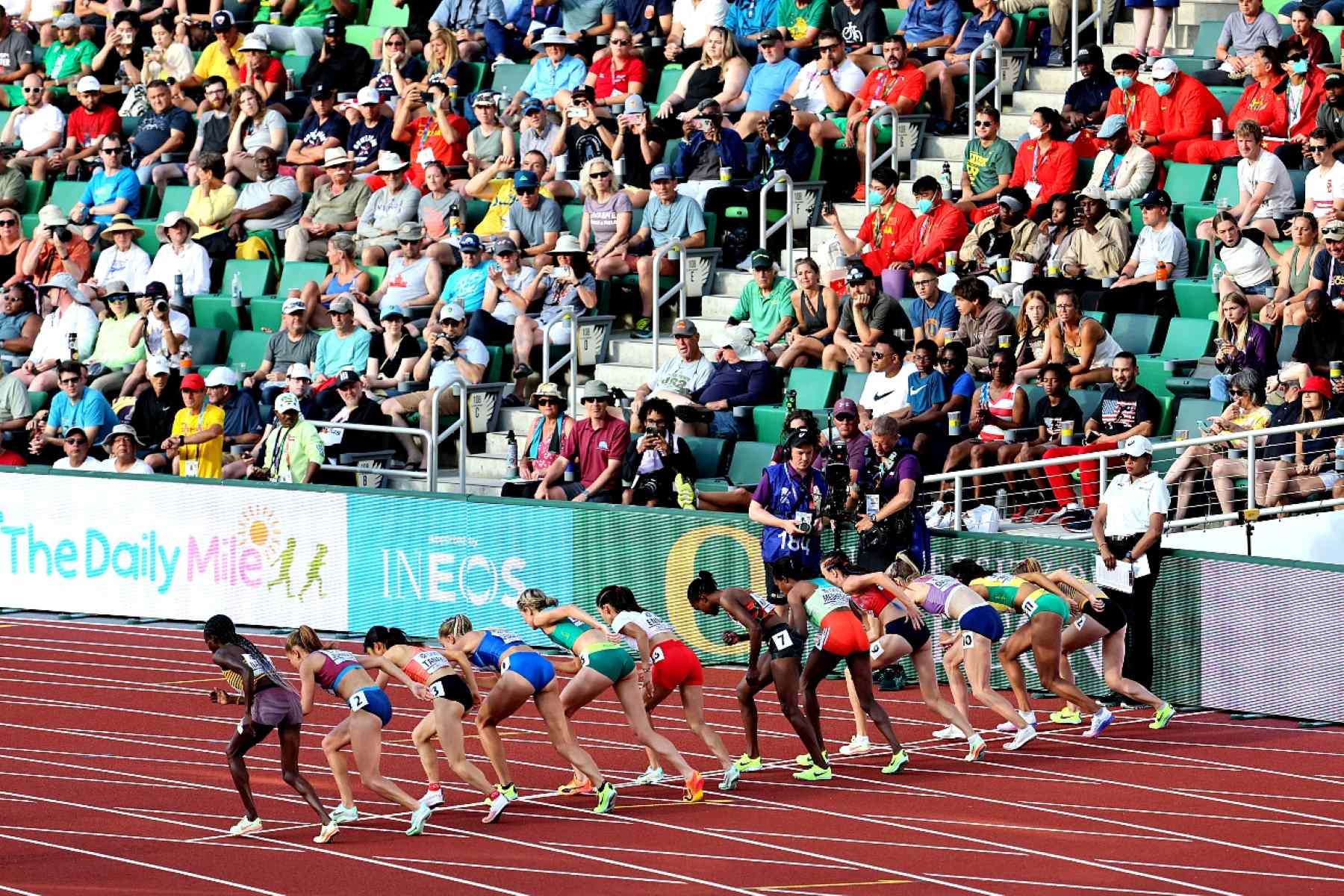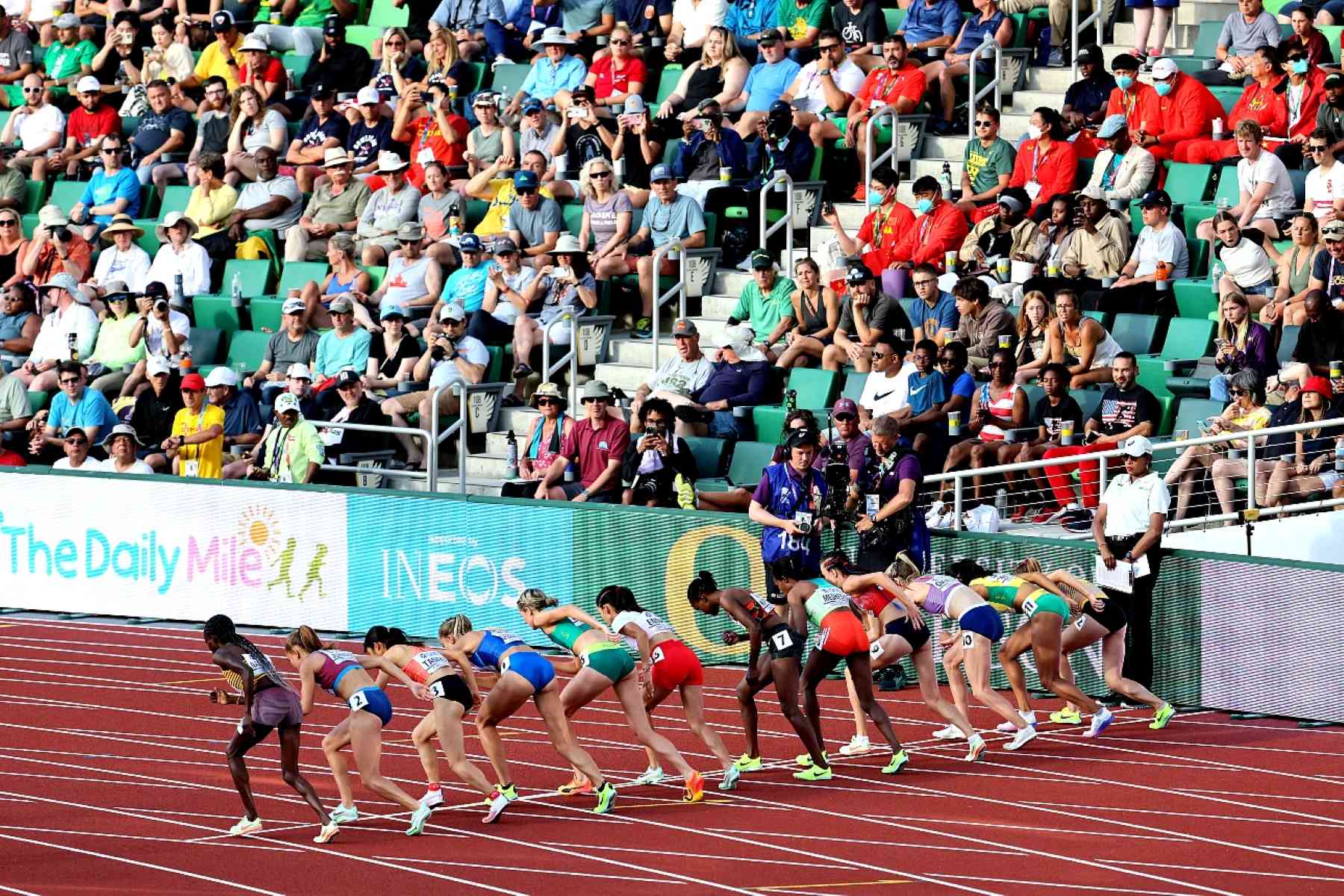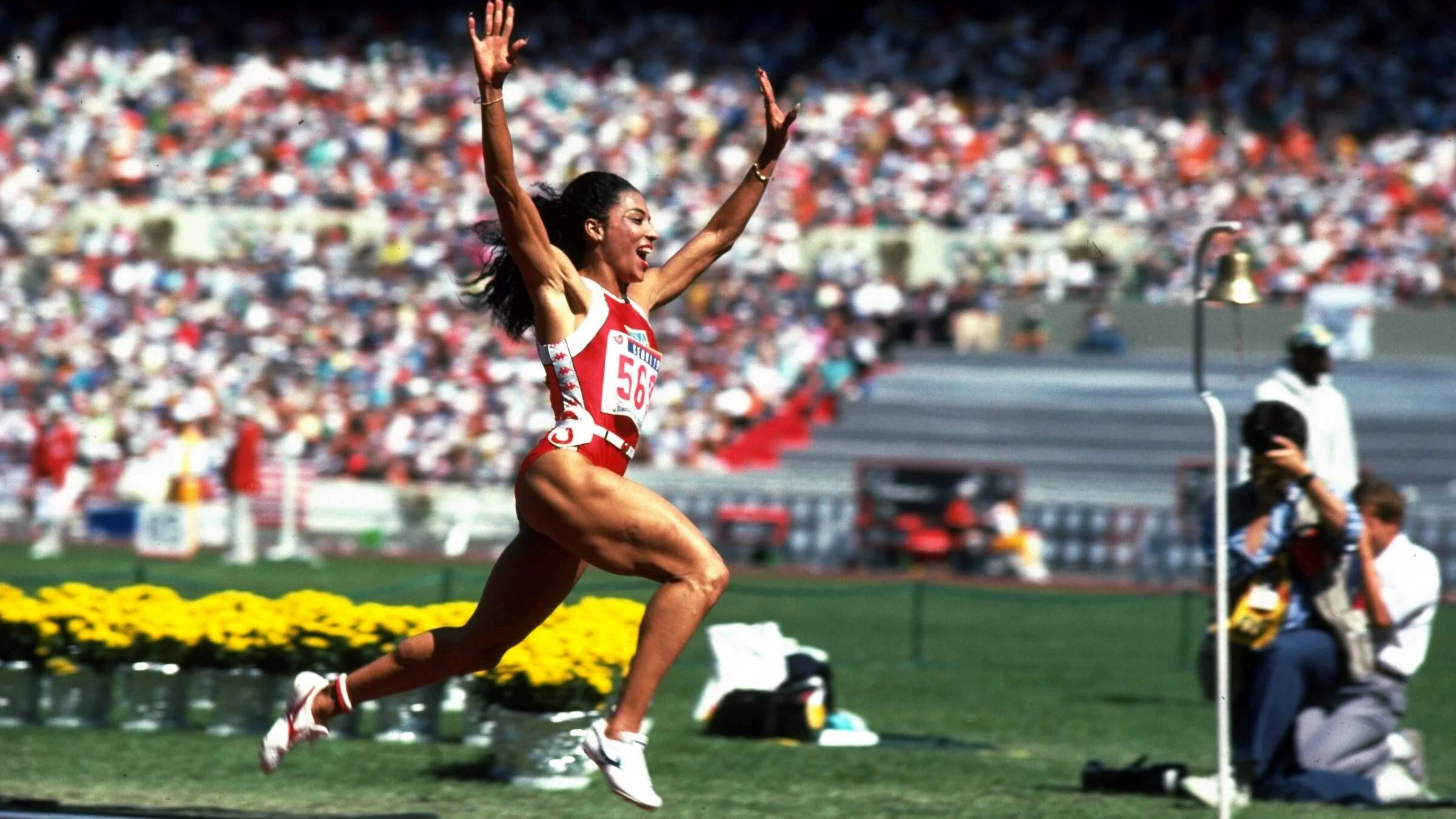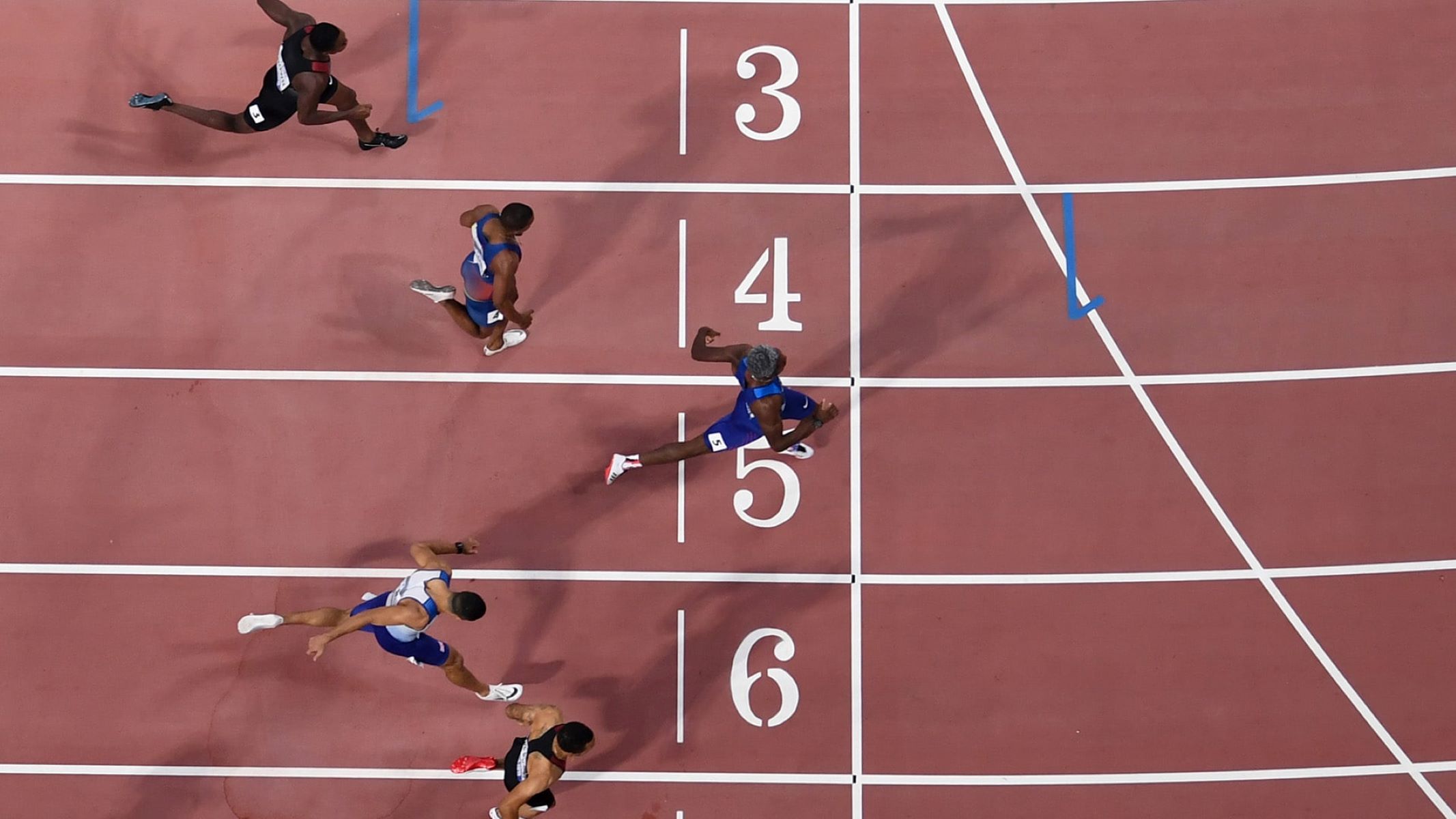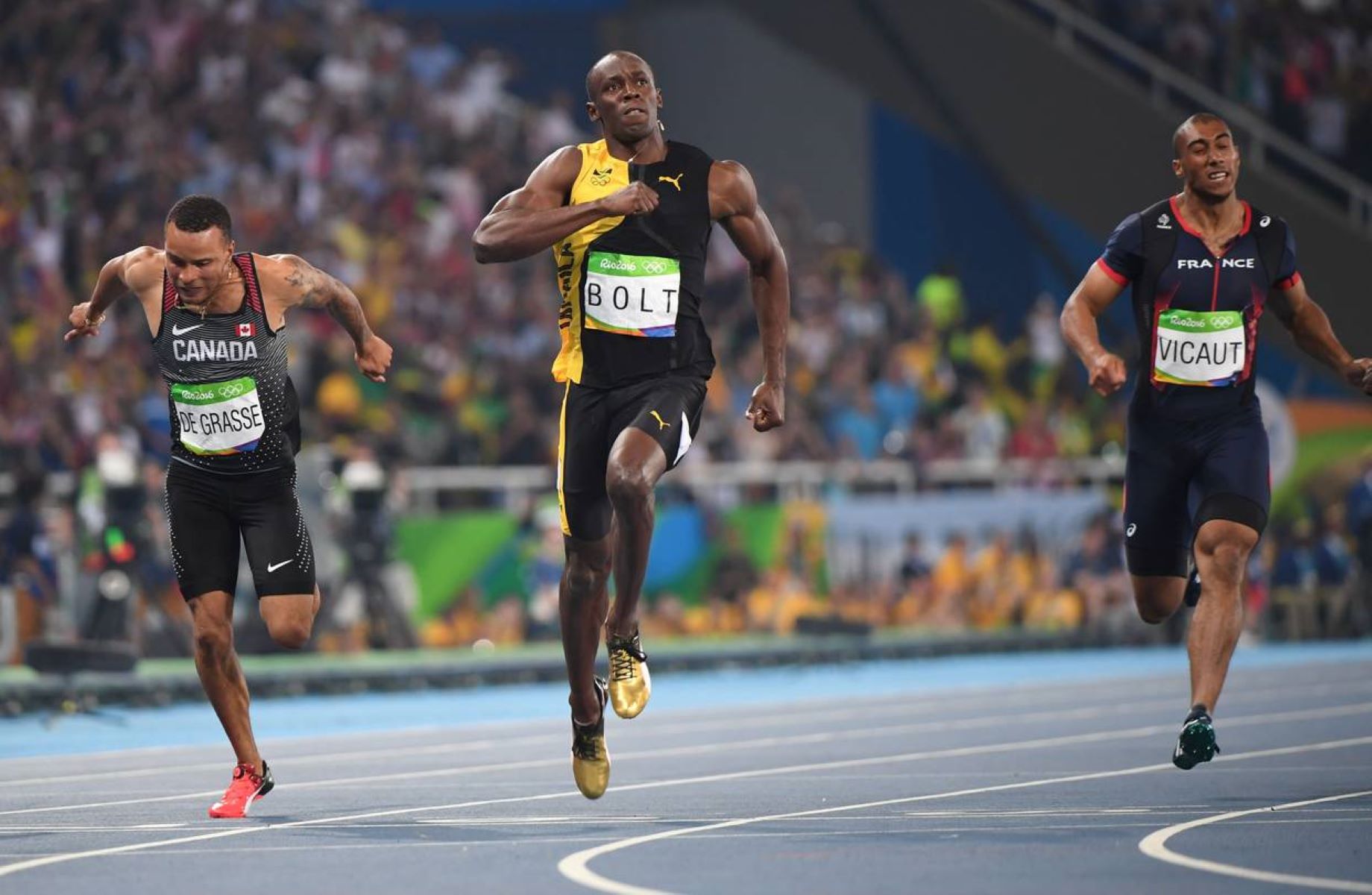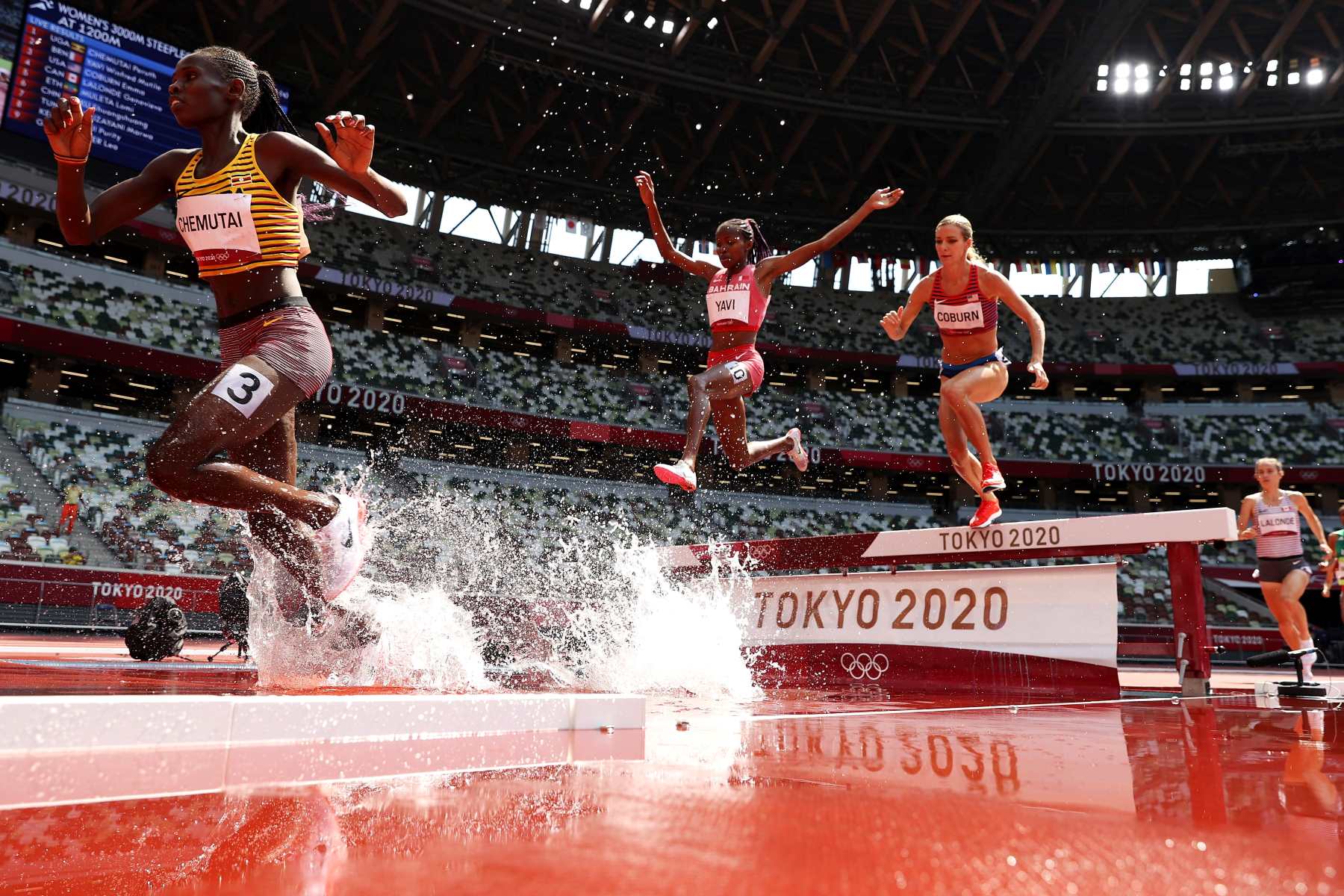Home>Misc>Featured>What Is The World Record For Track And Field


Featured
What Is The World Record For Track And Field
Modified: January 22, 2024
Discover the featured world record for track and field, including the fastest times, farthest jumps, and longest throws. Explore the incredible achievements of athletes in this thrilling sport.
Introduction
Welcome to the exhilarating world of track and field, where the limits of human strength, speed, and agility are constantly pushed to new heights. Track and field is a sport that encompasses a wide range of athletic events, including sprints, hurdles, long jump, high jump, discus throw, shot put, and many more. These events showcase the incredible athleticism, dedication, and skill of the athletes who participate.
One of the most exciting aspects of track and field is the pursuit of world records. A world record represents the pinnacle of achievement in a particular event, demonstrating that an athlete has surpassed all others in history. It is a testament to human potential and the constant quest for improvement.
The history of track and field world records is filled with awe-inspiring moments of triumph and breakthroughs. Throughout the years, athletes have shattered records, inspiring future generations to aim higher and go faster. But what exactly is the world record for track and field events, and how has it evolved over time?
In this article, we will delve into the fascinating world of track and field world records. We will explore the history of these records, the progressions in various events, and the notable athletes who have left an indelible mark on the sport. Additionally, we will discuss the factors that influence the ability to break records and the controversies that sometimes surround these achievements.
So, whether you are a track and field enthusiast, a casual sports fan, or simply curious about human potential, join us as we journey through the realm of track and field world records. Prepare to be amazed by the extraordinary feats accomplished by these remarkable athletes.
History of Track and Field World Records
The fascination with athletic achievements dates back centuries, and track and field events have been a part of human culture since ancient times. However, the concept of world records in track and field as we know them today emerged in the early 20th century.
The International Association of Athletics Federations (IAAF), established in 1912, became the governing body for track and field, setting the stage for the recognition of world records. In 1913, the IAAF established a set of criteria for recognizing world records, including guidelines on timing, equipment, and competition rules.
The first official world records in track and field were recognized in 1913. These initial records were established in events such as the sprints, hurdles, and throwing events, reflecting the early focus of the sport.
Over the years, the IAAF continued to refine and expand its criteria for world records. In 1936, electronic timing was introduced, providing more accurate measurements of race times. This development led to the promotion of more precise and reliable time-based records.
Advancements in technology, training methods, and equipment have played a significant role in the evolution of track and field world records. As athletes and coaches have gained a better understanding of human physiology and biomechanics, they have been able to push the boundaries of what was once thought possible.
In the 21st century, advancements in training techniques, nutrition, and sports science have provided athletes with the tools to further elevate their performance. This, along with improvements in track surfaces, has contributed to the steady progression of world records in various events.
Throughout track and field’s history, several iconic athletes have left an indelible mark on the sport through their record-breaking performances. From Jesse Owens’ legendary four gold medals at the 1936 Olympics to Usain Bolt’s astonishing display of speed and dominance in the 100m and 200m sprints, these athletes have captivated audiences and inspired generations of aspiring track and field stars.
Today, track and field world records continue to be a symbol of excellence and a driving force for athletes to push themselves to their limits. They serve as inspiration and benchmarks for those dreaming of making their mark in the sport, as well as a testament to the relentless pursuit of progress within the athletic community.
World Record Progressions in Track and Field Events
The pursuit of world records in track and field has seen a remarkable progression over the years. Athletes continue to push the boundaries of human performance, constantly striving to break existing records and set new ones. Let’s explore the fascinating world record progressions in various track and field events.
Sprint events, such as the 100 meters and 200 meters, have witnessed significant advancements in world records. From the early 20th century, athletes like Bob Hayes, Carl Lewis, and Usain Bolt have set new benchmarks for speed, continually lowering the record times. Bolt’s electrifying performance at the 2009 World Championships in Berlin, where he clocked a mind-boggling 9.58 seconds in the 100 meters, stands as one of the most remarkable achievements in track and field history.
Hurdles events have also seen notable progressions in world records. From the high hurdles to the 400-meter hurdles, athletes like Renaldo Nehemiah, Edwin Moses, Sally Pearson, and Dalilah Muhammad have redefined the limits of agility and technique. Muhammad’s incredible feat of 51.90 seconds in the women’s 400-meter hurdles at the 2019 World Championships shattered the previous world record by more than half a second.
In the field events, the world records for long jump, high jump, and shot put have been steadily pushed to new heights. From the iconic leap of 8.90 meters by Bob Beamon in the long jump at the 1968 Olympics to the incredible clearance of 2.45 meters by Javier Sotomayor in the high jump, these records showcase the extraordinary athleticism and technical prowess of the athletes.
The throwing events, such as the discus throw and javelin throw, have also witnessed impressive progressions in world records. Athletes like Jürgen Schult, who set an astounding record of 74.08 meters in the men’s discus throw, and Barbora Špotáková, who achieved a remarkable throw of 72.28 meters in the women’s javelin throw, have left an enduring mark on these disciplines.
It is important to note that the progressions in world records are not always linear. Certain records may stand for decades before being broken, while others may be toppled more frequently. The nature of the event, advancements in technology and training methods, as well as the emergence of exceptional talents, all contribute to the ebb and flow of world records in track and field.
As athletes continue to compete and strive for greatness, it is certain that future generations will witness even more astonishing world record progressions in track and field. These advancements will not only redefine the limits of human potential but also inspire aspiring athletes to dream big and believe that anything is possible with hard work and dedication.
Men’s Track and Field World Records
Men’s track and field events have produced some of the most iconic world records in the history of the sport. From the lightning-fast sprints to the astonishing jumps and throws, let’s explore some of the notable world records held by men in track and field.
When it comes to the sprint events, the men’s 100 meters record has been dominated by Jamaican sprinter Usain Bolt. With his record-setting time of 9.58 seconds achieved at the 2009 World Championships in Berlin, Bolt demonstrated his unparalleled speed and solidified his place as one of the greatest sprinters of all time. In the 200 meters, Bolt also holds the world record with a jaw-dropping time of 19.19 seconds.
In the middle-distance events, Hicham El Guerrouj of Morocco holds the world record for the men’s 1500 meters with a time of 3 minutes and 26 seconds. This impressive record has stood since 1998, showcasing El Guerrouj’s incredible endurance and tactical prowess on the track.
The men’s hurdles events have seen notable world record achievements as well. Kevin Young of the United States set a record time of 46.78 seconds in the 400-meter hurdles at the 1992 Olympics, a record that still stands today. Young’s exceptional performance showcased his combination of speed, strength, and technical skill.
When it comes to the field events, some remarkable world records have been established by male athletes. In the long jump, Mike Powell’s astounding leap of 8.95 meters at the 1991 World Championships in Tokyo broke a 23-year-old record and remains unbeaten. Powell’s jump showcased his incredible power and technique in the pit.
In the high jump, Cuban athlete Javier Sotomayor holds the record with his incredible clearance of 2.45 meters, achieved in 1993. Sotomayor’s leap highlighted his remarkable athleticism, precision, and control over the bar.
The men’s shot put record is held by American athlete Randy Barnes, who threw a massive distance of 23.12 meters in 1990. Barnes’ record-setting throw demonstrated his exceptional strength and technique in the throwing circle.
These are just a few examples of the incredible world records held by male athletes in track and field. Each record represents a moment of athletic brilliance, capturing the remarkable physical abilities and relentless pursuit of excellence that define the sport.
As technology, training methods, and athletic talent continue to advance, it’s exciting to think about the possibilities for future world records in men’s track and field events. Athletes will undoubtedly continue to push the boundaries, inspiring generations to come with their astonishing performances.
Women’s Track and Field World Records
Women’s track and field has witnessed incredible achievements and world records that have redefined the boundaries of what female athletes are capable of. From blazing fast sprints to gravity-defying jumps and powerful throws, let’s explore some of the notable world records held by women in track and field.
In the sprint events, Florence Griffith-Joyner, known as Flo-Jo, set the women’s 100 meters world record with an astonishing time of 10.49 seconds in 1988. Griffith-Joyner’s incredible speed, combined with her flamboyant style, captivated the world and left an indelible mark on the sport.
Another iconic name in women’s sprinting is Jamaican athlete Shelly-Ann Fraser-Pryce, who holds the women’s 100 meters world record of 10.63 seconds, set in 2021. Fraser-Pryce’s exceptional speed and consistency have made her one of the most dominant sprinters of her generation.
The women’s middle-distance events have also seen remarkable world record performances. Svetlana Masterkova of Russia set the world record for the 1500 meters in 1996 with a time of 3 minutes and 50 seconds. Her extraordinary record still stands today, showcasing her remarkable endurance and tactical prowess on the track.
In the women’s hurdles events, the world records have been continually pushed to new heights. Yordanka Donkova of Bulgaria set the record of 12.21 seconds in the 100-meter hurdles in 1988, a record that remains unbeaten. This record exemplifies Donkova’s exceptional speed, agility, and technical proficiency over the hurdles.
Turning to the field events, Galina Chistyakova of the Soviet Union set the women’s long jump world record with a phenomenal leap of 7.52 meters in 1988. Chistyakova’s incredible jump showcased her explosiveness and technique in the event.
Another exceptional athlete in the women’s field events is Croatian high jumper Blanka Vlašić. Vlašić holds the women’s high jump world record with a clearance of 2.08 meters set in 2009. Her record reflects her extraordinary ability to soar over the bar with grace and precision.
In the women’s shot put, Natalya Lisovskaya of the Soviet Union achieved a world-record throw of 22.63 meters in 1987. Lisovskaya’s incredible strength and technique in the event solidified her place as one of the greatest shot putters in history.
These remarkable world records held by women in track and field exemplify the incredible talent, dedication, and perseverance of female athletes. They serve as inspiration to future generations of female athletes, pushing them to dream big and strive for greatness.
As women’s participation and recognition in sports continue to grow, we can expect to see more astonishing world record performances in women’s track and field events. These records will not only showcase the remarkable abilities of female athletes but also pave the way for further progress and equality in the world of sports.
Notable Track and Field World Records
Track and field history is filled with notable world records that have captivated audiences and pushed the boundaries of human performance. These records represent the pinnacle of athletic achievement in the sport and serve as benchmarks for future generations of athletes. Let’s explore some of the most notable track and field world records.
One of the most iconic world records in track and field is Usain Bolt’s lightning-fast time of 9.58 seconds in the men’s 100 meters. Bolt achieved this record at the 2009 World Championships in Berlin, showcasing his exceptional speed and dominance in the sprinting world.
In the women’s 100 meters, Flo-Jo’s world record of 10.49 seconds has stood the test of time. Florence Griffith-Joyner set this incredible record in 1988, displaying her electric speed and style on the track.
The women’s long jump world record held by Galina Chistyakova is another notable accomplishment. Chistyakova leaped an astounding distance of 7.52 meters in 1988, demonstrating her explosive power and technical proficiency in the event.
In the high jump, Javier Sotomayor’s world record of 2.45 meters is an extraordinary achievement. Sotomayor, a Cuban athlete, set this record in 1993, showcasing his superior athleticism and remarkable ability to soar over the bar.
Another notable record is Jürgen Schult’s monumental throw of 74.08 meters in the men’s discus throw. Schult achieved this incredible feat in 1986, highlighting his exceptional strength and technique.
Beyond these individual records, the women’s 4×100 meters relay world record set by the United States team at the 2012 Olympics stands out. The team of Tianna Bartoletta, Allyson Felix, Bianca Knight, and Carmelita Jeter blazed their way to a record time of 40.82 seconds, showcasing the combined speed and teamwork of these remarkable athletes.
It is important to mention the world records set in track and field events for athletes with disabilities. One notable example is the men’s T43 100 meters world record held by Jonnie Peacock. Peacock, a British sprinter with a prosthetic limb, set the record of 10.90 seconds, demonstrating that disability is no barrier to achieving incredible athleticism.
These notable track and field world records showcase the extraordinary talent, dedication, and perseverance of athletes who have pushed the boundaries of what is considered possible in their respective events. These records inspire future generations of athletes to dream big, work hard, and strive for greatness.
As technology, training methods, and athletic talent continue to evolve, we can expect these world records to be challenged and even broken in the future. Each new record not only represents an individual achievement but also contributes to the ongoing legacy and development of track and field as a sport.
Factors Influencing Track and Field World Records
Track and field world records are influenced by a variety of factors that influence the performance of athletes in their respective events. From advancements in technology and training methods to natural talent and the environment in which the records are set, let’s delve into the key factors that contribute to the breaking of world records in track and field.
One crucial factor is technological advancements. Equipment such as footwear, starting blocks, and track surfaces have undergone significant improvements over the years. Lightweight and aerodynamically designed shoes can enhance speed and minimize energy loss, while state-of-the-art tracks and starting blocks provide optimal traction for explosive starts. These technological advancements help athletes gain that extra edge in their performances, allowing them to push the limits of their capabilities.
Training and coaching methods also play a vital role in record-breaking performances. Advancements in sports science have led to a better understanding of human physiology, biomechanics, and nutrition. Athletes now have access to tailored training programs that optimize their physical development, improve technique, and ensure peak performance during competition. Techniques such as periodization, plyometrics, and strength training enable athletes to develop speed, power, and endurance, leading to improved record-breaking potential.
Natural talent and genetics are inherent factors that can influence an athlete’s ability to break records. Some individuals possess genetic advantages, such as a higher percentage of fast-twitch muscle fibers, which are essential for explosive speed and power. Factors like body composition, flexibility, and natural coordination can also contribute to an athlete’s potential for record-breaking performances.
The environment in which the records are set can have a significant impact. Favorable weather conditions, including tailwinds, can assist sprinters in achieving faster times, while ideal temperatures and humidity can optimize endurance performances. Additionally, competing in high-altitude locations may provide an advantage in certain events, as reduced air density can improve oxygen uptake and overall performance.
The level of competition is another influencing factor. Athletes are often motivated and inspired by their competitors, pushing them to perform at their best and reach new levels of excellence. The presence of strong opponents can create a competitive atmosphere that fosters breakthrough performances and record-breaking achievements.
It is important to note that the increasing professionalism and financial incentives in the sport of track and field can also contribute to an environment conducive to record-breaking performances. Athletes are now able to dedicate more time and resources to their training, resulting in higher levels of performance and the potential for breaking records.
While these factors significantly influence track and field world records, it is ultimately the athlete’s unwavering dedication, hard work, and mental fortitude that drive them to surpass not only the current records but also their own personal limits. Truly remarkable performances require a combination of all these factors, aligning at the perfect moment to create history on the track and in the field.
Controversies Surrounding Track and Field World Records
Track and field world records have not been free from controversies throughout its history. These controversies often arise due to suspicions of doping, variations in record measurement and technology, and changes in rules and regulations. Let’s explore some of the controversies surrounding track and field world records.
One major controversy that has plagued the sport is the use of performance-enhancing drugs. Doping scandals have cast a shadow over several world records, with athletes testing positive for banned substances. These incidents have raised questions about the integrity of record-breaking performances and the fairness of competition. Drug testing protocols and increasing efforts to detect and deter doping have been implemented to ensure a level playing field.
Another controversy involves variations in record measurement and technology over time. For example, changes in track surfaces, starting methods, and wind measurement have resulted in differing conditions for record attempts. This has led to debates about the comparability and legitimacy of records set in different eras. The International Association of Athletics Federations (IAAF) has implemented strict rules and standards to ensure consistency in record measurement.
Changes in rules and regulations have also sparked controversies surrounding world records. When the IAAF introduced new rules, such as the ban on certain shoe technology or changes in the legal wind limit for record consideration, previous records that were achieved under different conditions and rules were no longer recognized. This has led to debates about the integrity of record books and the preservation of historical performances.
In some cases, disputes have arisen over the age and accuracy of records. Historical records from the early days of the sport may lack proper documentation, making it difficult to verify their authenticity. Additionally, controversies have surfaced when records have been broken by underage athletes, raising questions about their maturity and physical development at the time of the performance.
Controversies have also emerged regarding exceptional performances that deviate significantly from the athlete’s previous capabilities. These performances trigger suspicions of illegal means, leading to scrutiny and inquiries into the athlete’s training methods and drug testing history.
Efforts are continuously being made to address these controversies and maintain the integrity of track and field world records. Stricter anti-doping measures, improved record measurement protocols, and consistent rule changes aim to ensure fairness and transparency in recognizing and maintaining world records.
While controversies may cast doubt on certain records, they should not overshadow the remarkable achievements of athletes who have dedicated their lives to their sport. World records continue to serve as milestones of human potential in track and field, pushing athletes to strive for greatness and inspiring future generations to reach new heights.
Conclusion
The world of track and field is a captivating realm where human potential is constantly tested and new boundaries are shattered. World records serve as milestones of achievement, showcasing the incredible athleticism, dedication, and skill of the athletes who push the limits of human performance.
Throughout the history of track and field, world records have evolved and progressed, reflecting advancements in technology, training methods, and the dedication of athletes. From the lightning-fast sprints to the gravity-defying jumps and powerful throws, each record represents a remarkable moment of triumph and a testament to human potential.
However, the pursuit of world records is not without challenges and controversies. Suspicions of doping, variations in measurement and technology, and changes in rules have sparked debates and raised questions about the integrity and comparability of record-breaking performances. Efforts are continuously made to maintain the fairness and transparency of track and field world records.
Despite these controversies, track and field world records continue to inspire and fuel the dreams of aspiring athletes. They serve as benchmarks for future generations, showcasing what is possible with hard work, dedication, and unwavering determination.
As technology further advances, training methods improve, and athletic talent grows, it is inevitable that track and field world records will continue to be broken. Each new record is a testament to the undying spirit of competition and the relentless pursuit of greatness that defines the sport.
So, whether you are a track and field enthusiast, a casual sports fan, or simply appreciate the extraordinary feats of human athleticism, let us continue to celebrate the world records that capture the essence of what it means to strive for excellence on the track and in the field.

